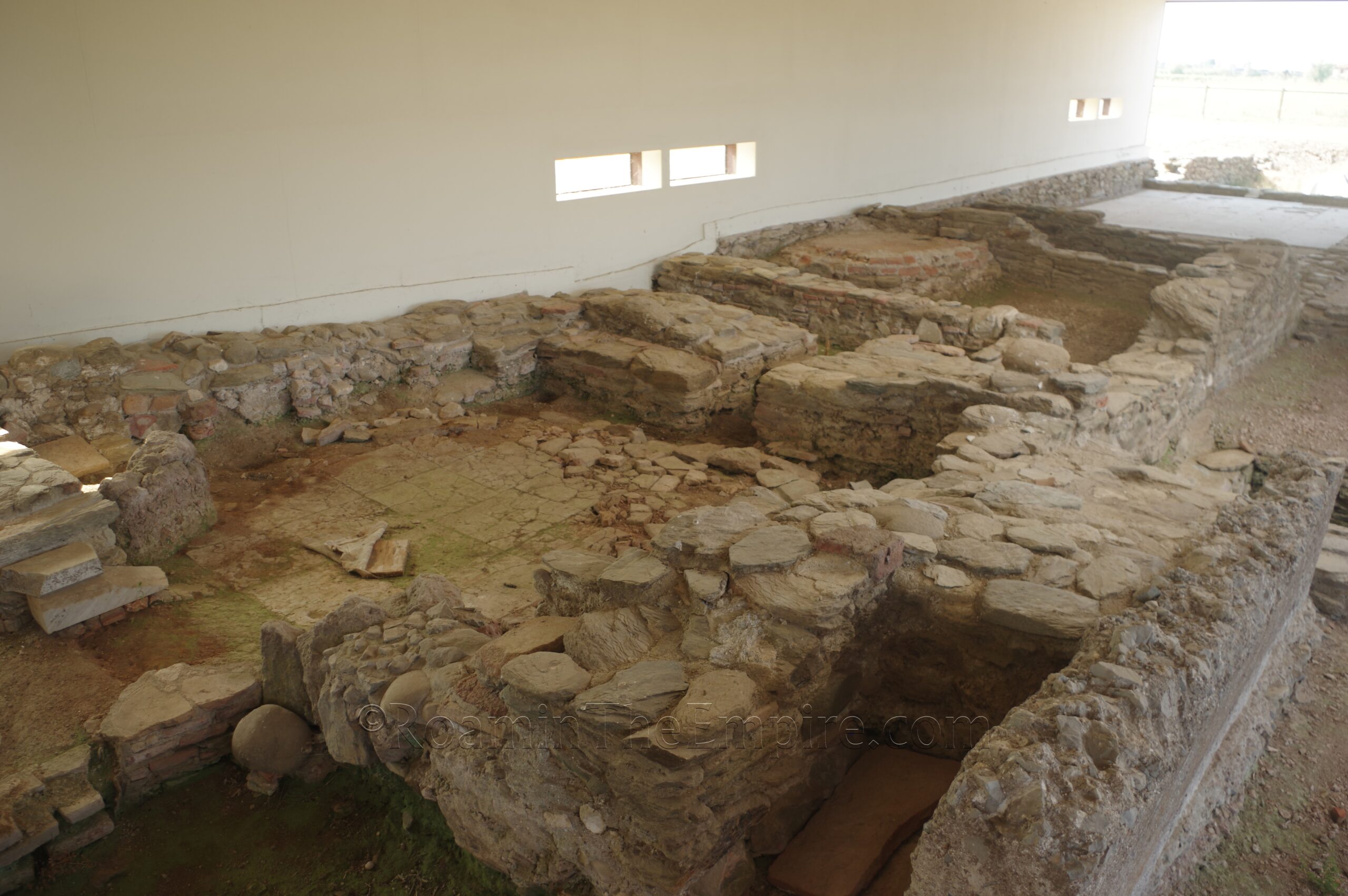
Continued From Luna, Etruria – Part I
Also at the southeast corner of the forum, beyond the augusteum, is a large private house known as the Domus degli Affreschi, the House of the Frescoes. The house was originally constructed in the middle of the 1st century BCE before undergoing renovations about 40 CE. It underwent another phase of renovations between 50 and 70 CE, resulting in its present form. It was occupied until the 4th century CE, when it was then abandoned.
It’s a bit tricky because it looks inaccessible at first, but the entrance is actually on the east side of the house, not adjacent to the forum. The east wing of the house is taken up by a bathing complex, which has some elements of the heating system visible as well as some mosaic and marble flooring preserved in the cold rooms and a triclinium on the south part. The central area is taken up by a large garden area, and the west wing has a number of other mosaicked rooms, including another triclinium in the center. Along the north wall of the house are some of the preserved frescos that give the house its name.
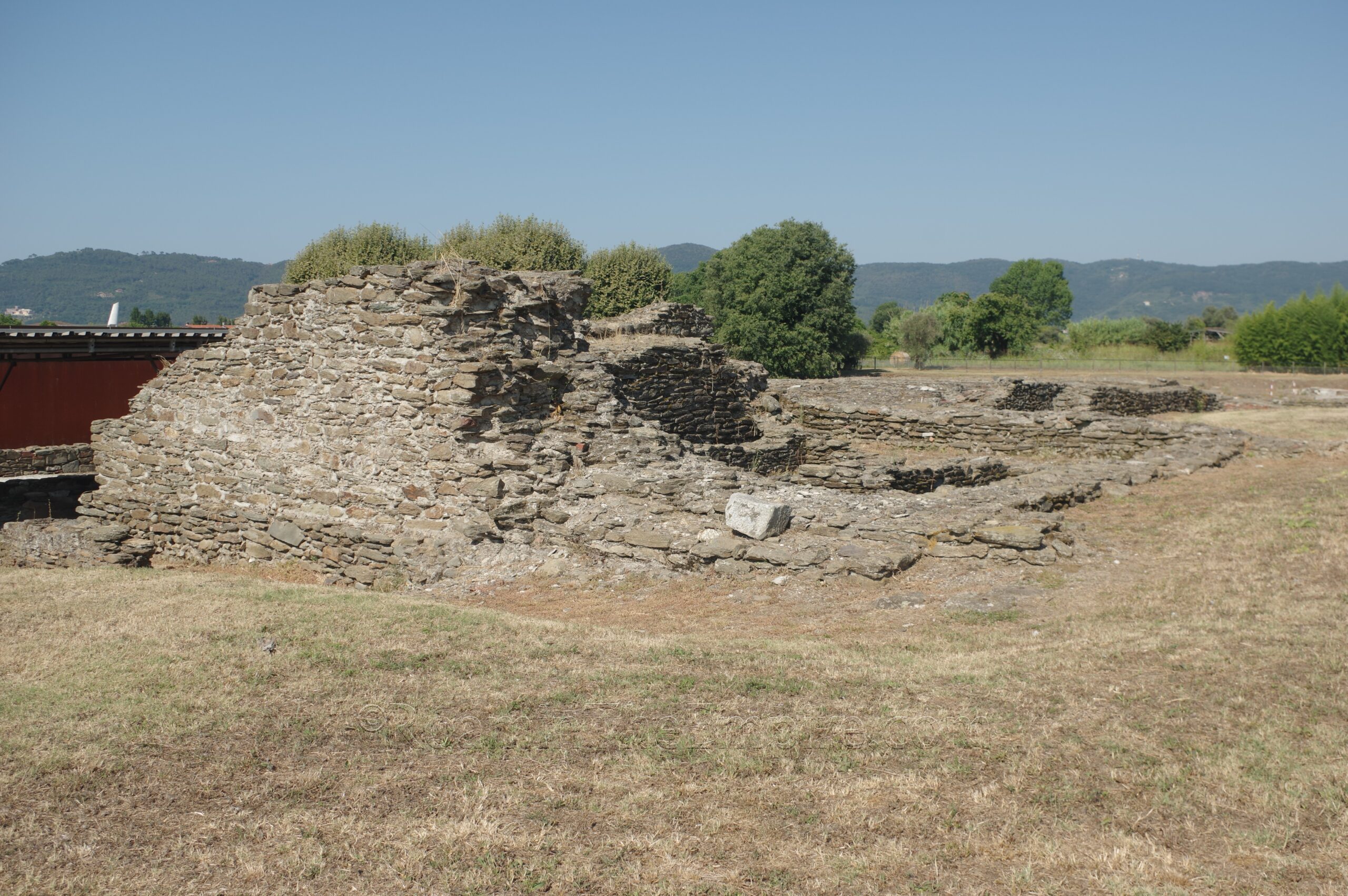
Around the north side of the house is a complex identified as a temple, possibly being dedicated to Diana. The identification comes from the discovery of a relief depicting the goddess, though the attribution is by no means secure. The temple was built in the middle of the 1st century CE, when a large artificial terrace was constructed over the previously existing buildings. Just a small bit of the foundations of the temple are visible, with much of the excavated are of the temple being backfilled. Between the temple and the Domus degli Affreschi, though, below the terrace, is an interesting room filled with a number of dolia defossa preserved in the floor. This room appears to have been associated with the temple complex rather than the house.
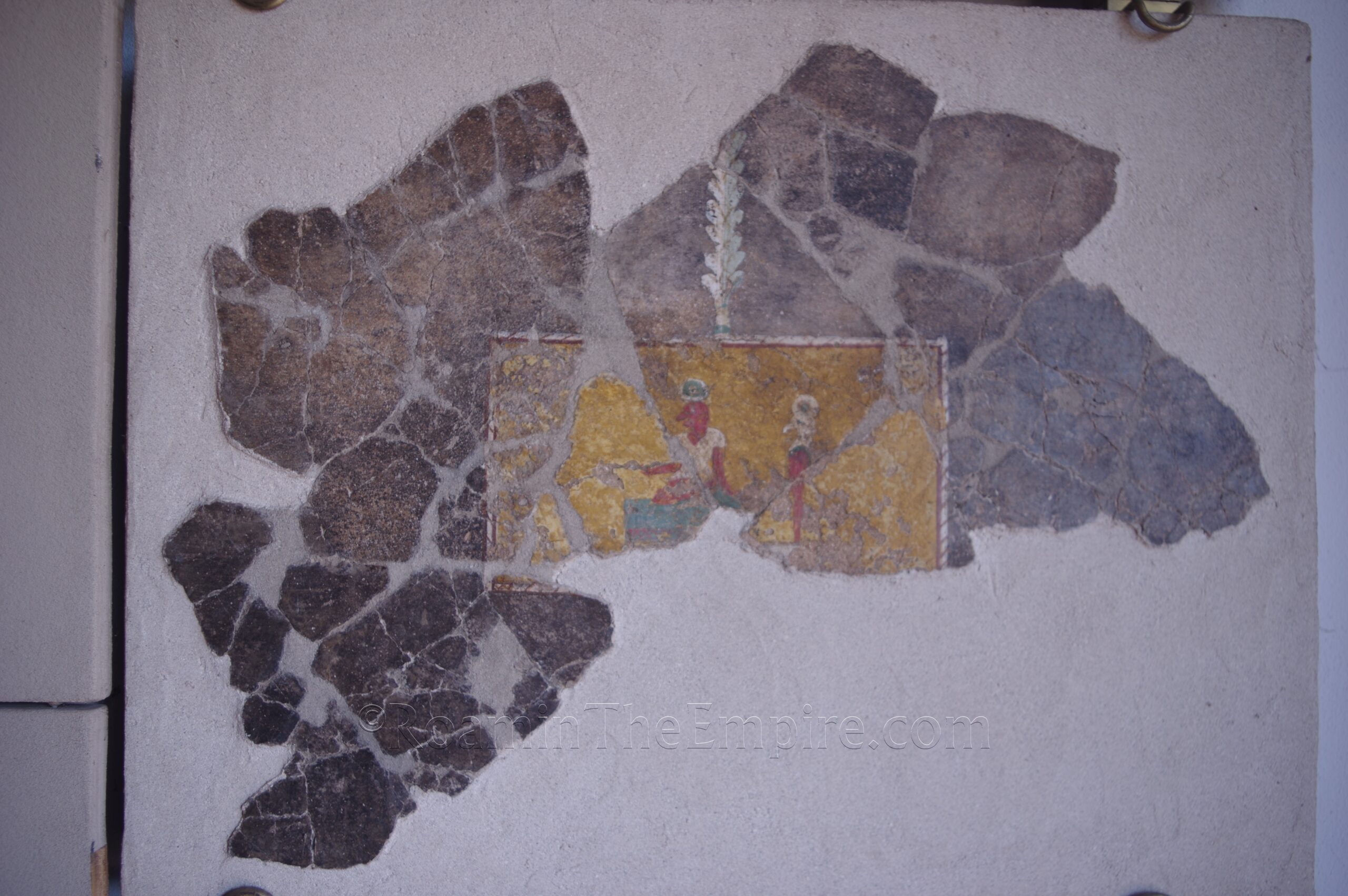
Heading back toward the north part of the forum, there is a path that leads off to the east. About 275 meters down that path are a few buildings that host a small additional museum area. This area is mostly devoted to the domestic structures at the site. There are a few mosaics under a roof in the courtyard of the buildings, in particular one depicting Oceanus from the Domus di Oceano. The smaller building adjacent to this contains a few walls of fragmentary fresco from the Domus degli Affreschi. The main building, a two story building, is filled with various objects and informational panels about the domestic buildings at Luna. Mostly some small finds. Unlike most of the informational panels at the site, these are predominately in Italian only, rather than with English translations. The information on the objects on display is similarly only in Italian. There is another room here with a few more panels of fresco from the Domus degli Affreschi.
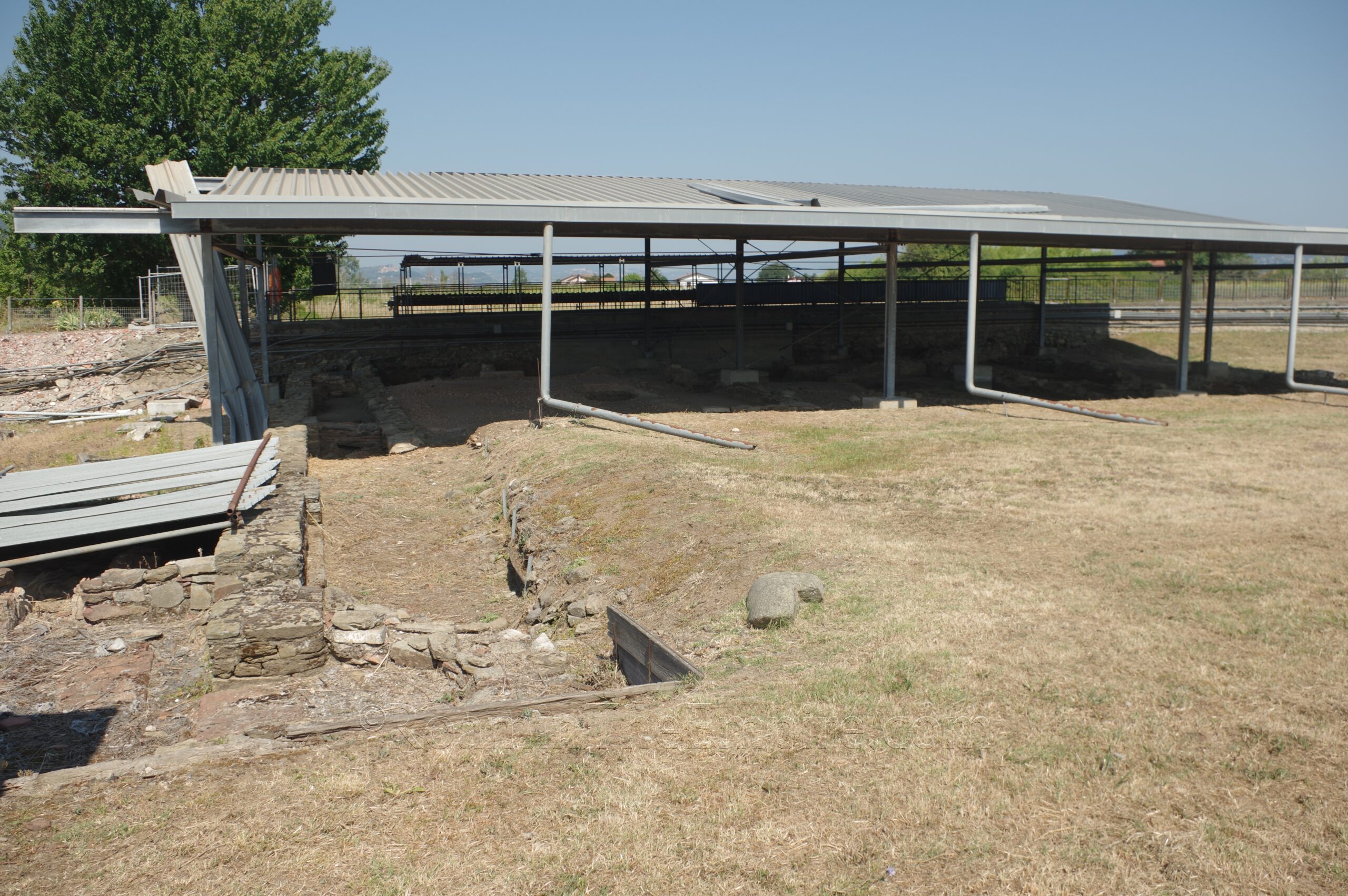
From there, a path back to the forum splits off to the north, which takes one along the north side of the northern portico of the capitolium. Unfortunately another path branch that leads west to the Domus dei Mosaici and the Grand Temple of Luna is closed, and those structures are not directly accessible (though there is a way to get a closer look at the temple outside the park.
The first accessible structure that the path to the north leads to is the Domus Settentrionale, the Northern House. This home was constructed in the early imperial period, overlaying unspecified buildings of the Republican age. It was situated near the northern gate of Luna. It was abandoned in the 4th century CE, but in the early medieval period a series of four burials were made in the structure. Unfortunately only a few bits of the Domus Settentironale are visible. The ancient house is overlaid by a modern structure, which appears to have the house excavated within the structure, but not accessible. The epigraphic exhibition also seems like it is, or was, housed in this building but is similarly no longer accessible.
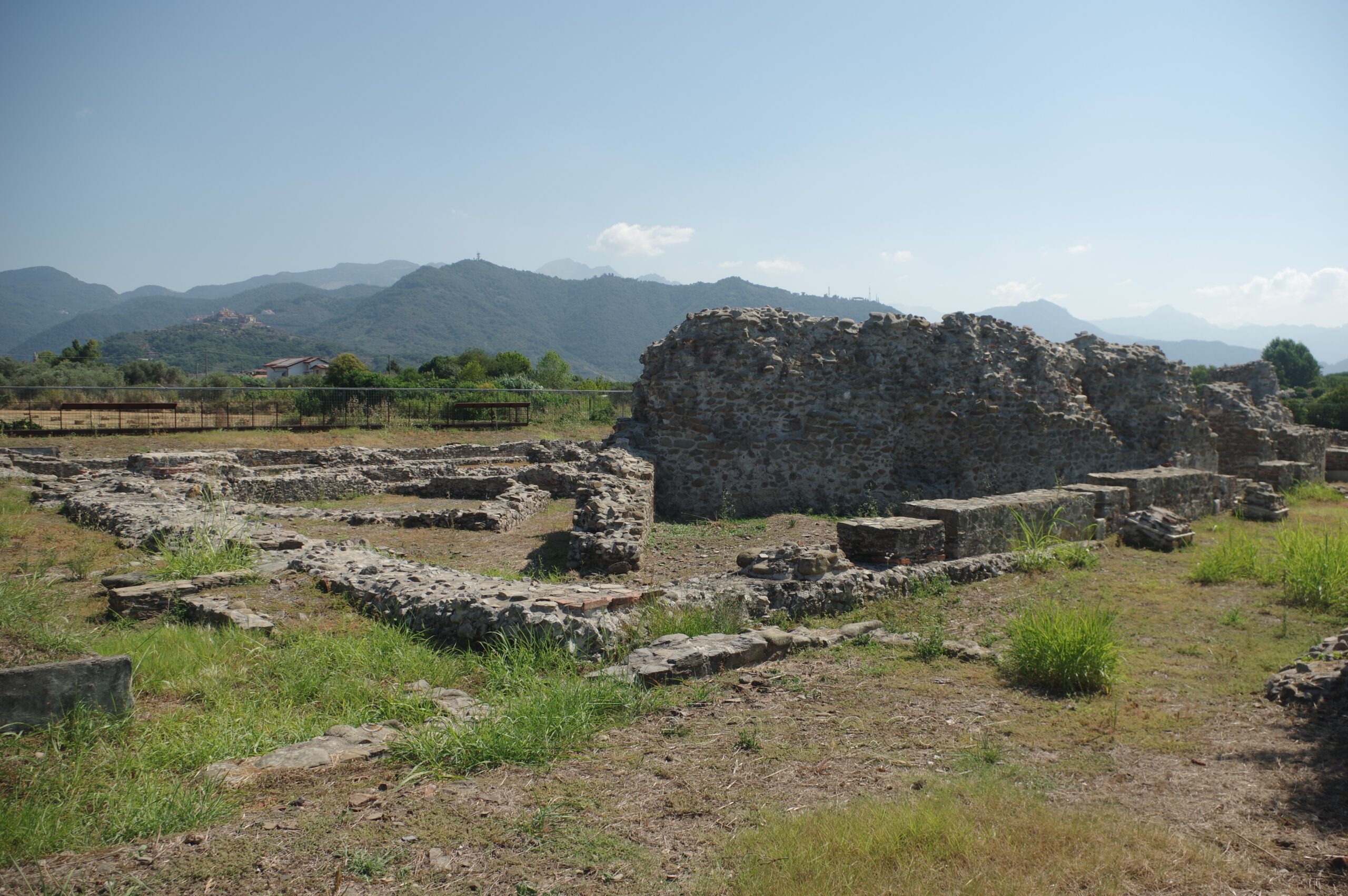
The final building within the park is about 100 meters to the west, the theater. The theater was constructed around the middle of the 1st century CE in the northeastern corner of the city. The size and presence of roofing tiles (which have been found with stamps and have helped with the dating of the structure), however, may indicate that it is an odeon rather than a theater. The shape of the building is fairly well preserved, but most of it is down to the foundations. None of the seating is visible, and really only the rear support wall has any significant height to it. Perhaps for this reason, there doesn’t seem to be any estimation of the seating capacity of the venue.
The theater finishes up the archaeological area. I spent a total of about 2 hours in the archaeological park. It could surely be done a little faster, but I took my time for the most part. Most of the main points of interest have signs in Italian and English with helpful diagrams and pictures to assist in making sense of what is going on. The site is also laid out pretty well, where one could see most of the site without backtracking too much, except for the end. I was a little disappointed that some fairly large areas were inaccessible, but, part of that might be to what looks to be ongoing work. The recent removal of the modern building near the capitolium seems to be responsible for some of that. And the renovations to the museum are also understandable. But the closing of the Domus Settentironale and epigraphic collection seemed to have less reason.
There are a few points worth visiting outside of the park. The first isn’t actually outside the park, but isn’t accessible from inside the park either. The Grand Temple of Luna is closed, but it can be seen much closer from a road outside the park. Unfortunately it’s quite a roundabout way to get to it. From the parking lot of the archaeological museum, one must go back out to Via Braccioli, north about 600 meters to Via Nuova Appia, turn right and go another 200 meters to Via Luni, and then back south. This is the only accessible route, other routes mapping apps suggest are not actually accessible. This is 1.2 kilometers in total, which is just a few minutes by car, but without a car is more like 20 minutes walking.
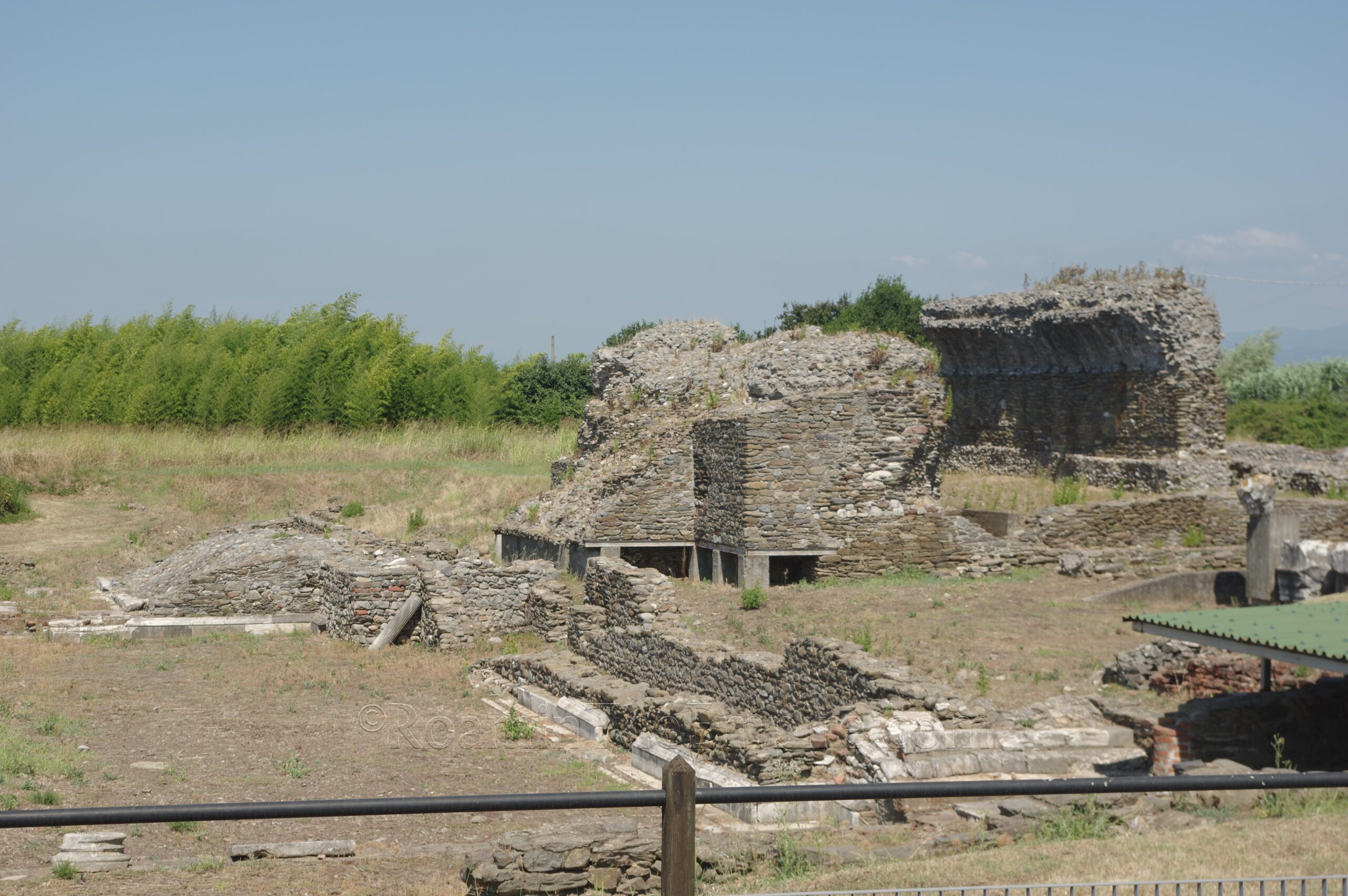
While the temple is still fenced and inaccessible, the road effectively divides it from the main archaeological site, so the road running to the east of the temple and a smaller dirt road running to the north of it allow for better views, at least. Evidence suggests that the original construction date of a temple here is the 2nd century BCE, likely near the time of the foundation of the city. The dedication of the temple is to the goddess Luna. Significant remains of the temple itself are visible, as well as the enclosed portico precinct of the temple located to the south of the temple. Unfortunately the information panel for this temple is completely sun bleached and illegible, so I wasn’t able to get much additional information about the building.
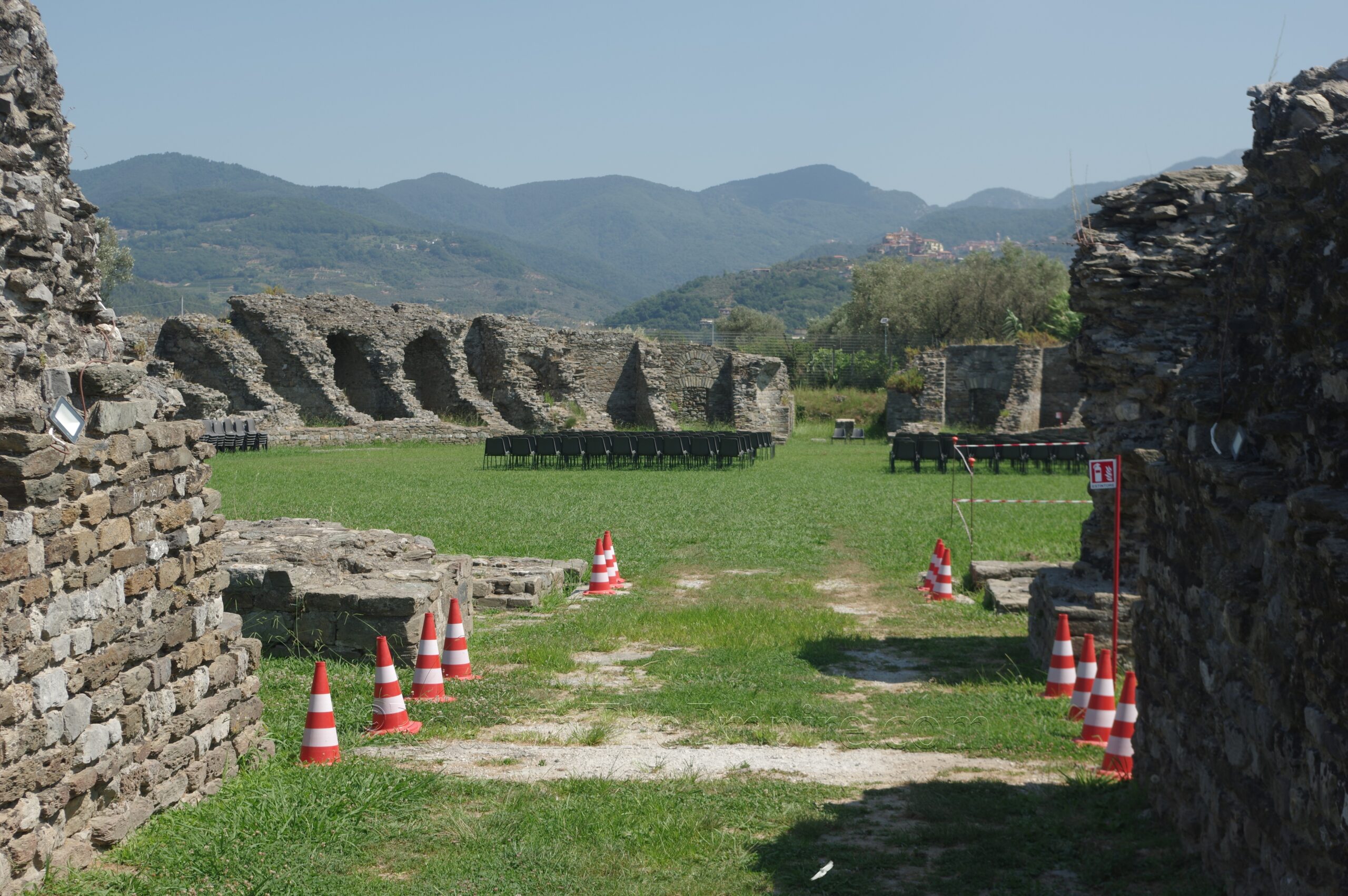
There are a couple more points of interest that area, again, not far in distance, but because of the navigable roads, require a less direct route. The amphitheater requires one to backtrack to the Via Nuova Appia and then 600 meters to the next street heading back to the south, Via Fossa Maroncia. Again, it’s about 1.6 kilometers, which is just a few minutes by car or about 20 minutes walking. The amphitheater is operated separately from the main site and museum. It is a separate entrance that is not included in the ticket and operates on a slightly different schedule. It is also, unfortunately, not only closed on the standard Monday, but closed on Tuesdays as well, which happens to be the day I decided to visit. It is open Wednesday through Sunday from 10:00 to 13:00 and 15:00 to 18:00. Admission is 2 Euros.
The amphitheater was constructed outside the eastern walls of Luna in the 2nd century CE. It is oriented on a slightly different axis than the actual city, owing to the Augustan centuriation of the land outside the city walls. It is estimated to have held about 7,000 spectators. Again, unfortunately I was not able to access the interior, but some of it can be seen from outside. A good deal of the substructure of the amphitheater is standing. There’s nothing preserved above that supporting area of the ima cavea, but the shape of the amphitheater is pretty well delineated by what remains, as are some of the portals and lower staircases.
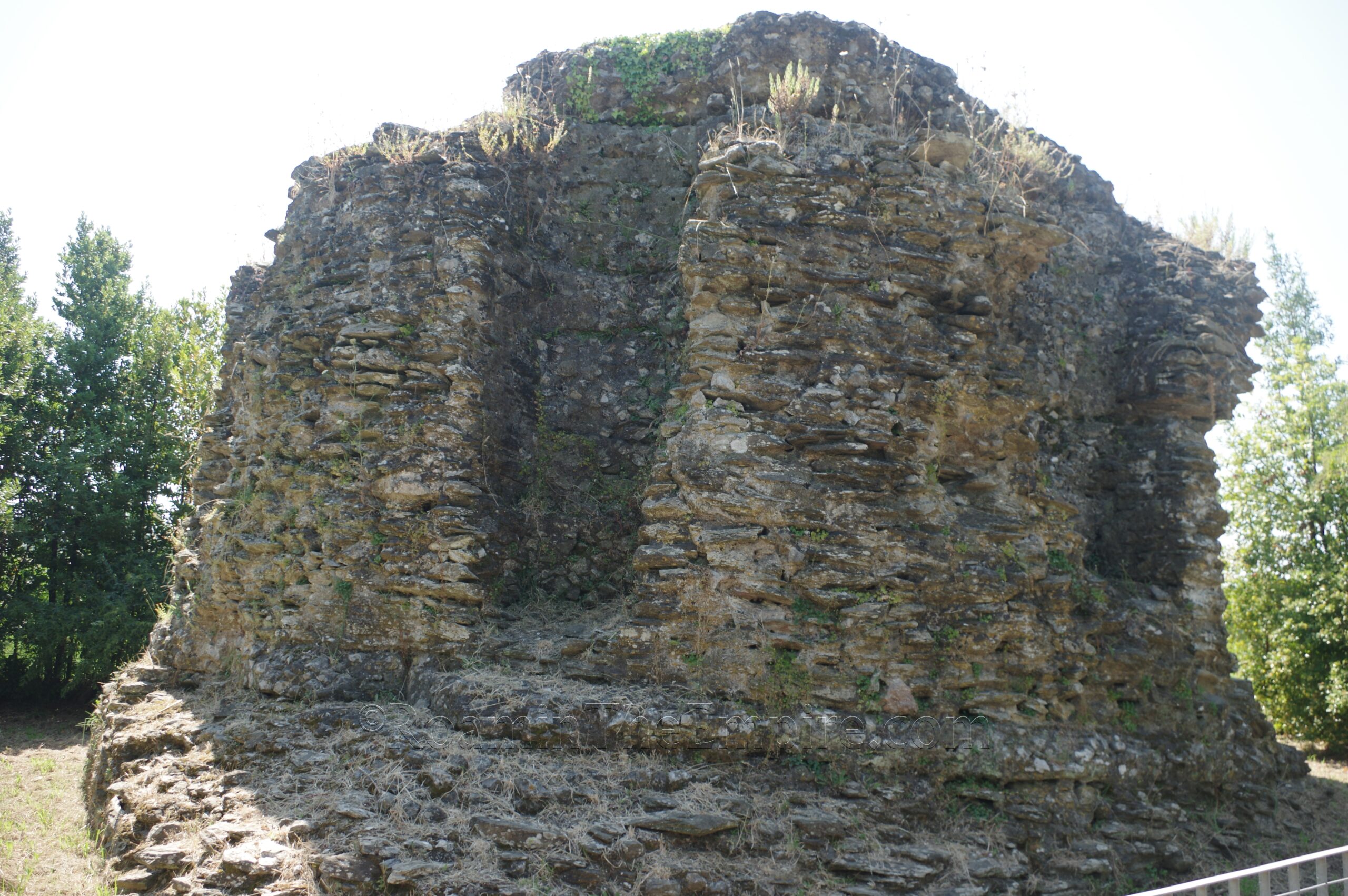
Just a short distance away, about 115 meters to the southwest (and for once, a similar walking distance), are the remains of a mausoleum. This mausoleum would have been situated just outside the western gate of Luna, as part of a larger necropolis. Other burials have been found in the immediate area of the mausoleum, but the mausoleum is the only bit of the necropolis that is presently visible. Direct access to the mausoleum is gated, but it is visible from the street. There’s even a little parking area and an informational sign (in Italian and English) next to the structure.
Altogether I spent about 2.5 hours at Luna, including the sites outside the archaeological area. Had I been able to actually get into the amphitheater, it probably would have been a little more. It’s a pretty easy half day trip from Pisa or La Spezia. I was even able to get out to the Villa Romana del Varignano Vecchio, which is at least a 2.5 hour diversion from Luna. Aside from the inaccessible areas/closures in the park (which are not mentioned anywhere until you get in and encounter them) and the seemingly random closure of the amphitheater on Tuesdays, it’s a very nice stop and a bit off the beaten path. There were only a few other people there the entire time I was visiting, and often had whole areas of the park to myself.
Sources:
Coles, Amanda J. “Founding Colonies and Fostering Careers in the Middle Republic.” The Classical Journal, Vol 112, No. 3 (Feb/Mar 2017) pp. 280-317.
Grant, Michael. A Guide to the Ancient World: A Dictionary of Classical Place Names. New York: Barnes & Noble Books, 1997.
Livy. Ab Urbe Condita, 41.13
Martial. Epigrams, 13.30
Pliny the Elder. Historia Naturalis, 3.8.1, 11.97.1, 14.8
Smith, William. Dictionary of Greek and Roman Geography. Walton & Murray, 1870.
Stillwell, Richard, William L. MacDonald, and Marian Holland. McAllister. The Princeton Encyclopedia of Classical Sites. Princeton, NJ: Princeton U Press, 1976.


